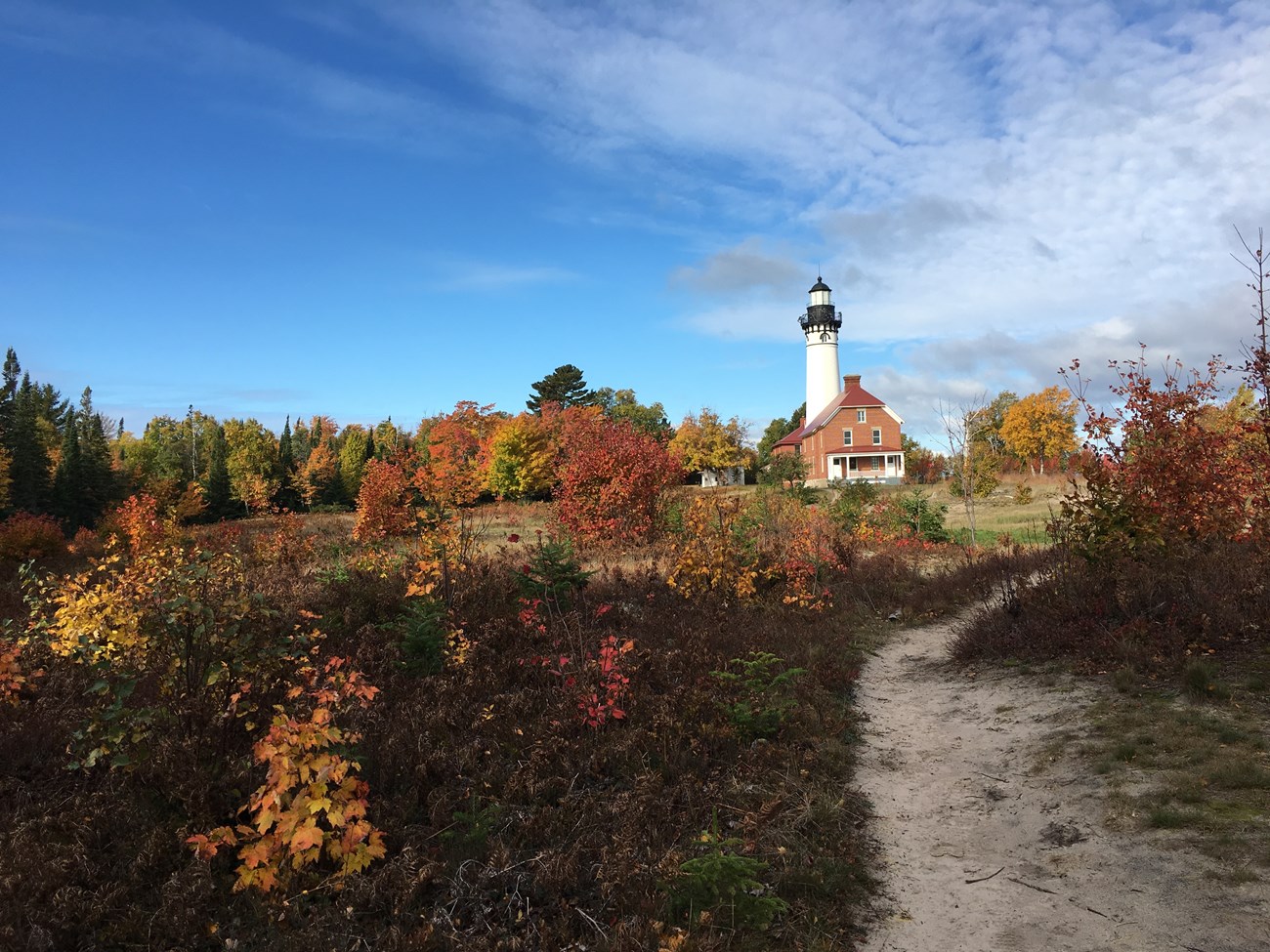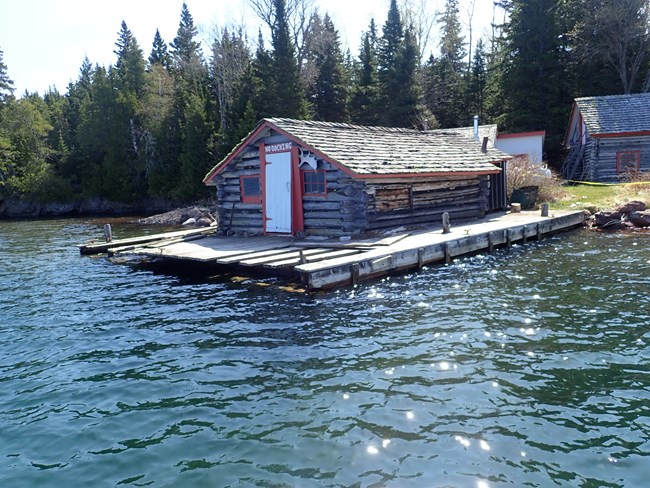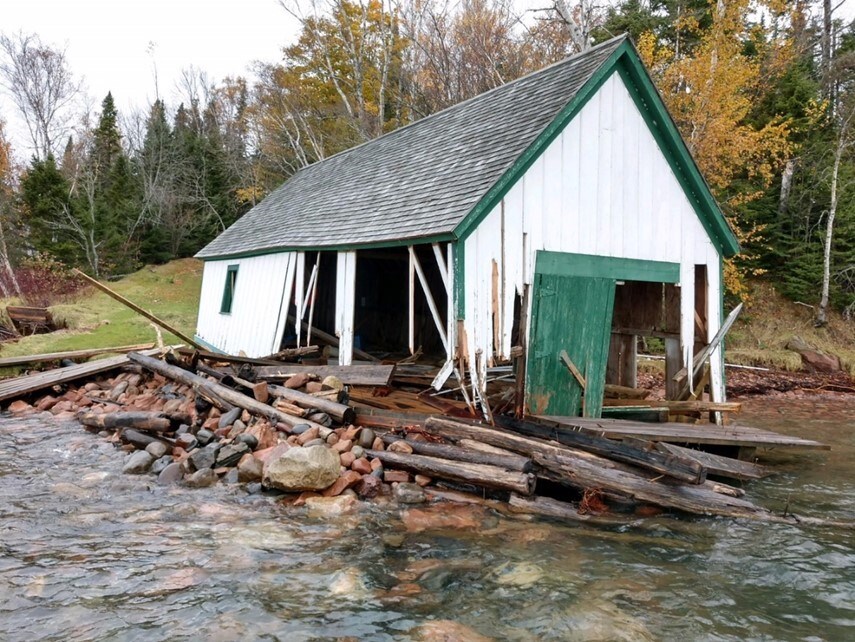Last updated: December 13, 2024
Article
Safeguarding Cultural Treasures Against Climate Peril in Midwest Parks
By Anna Petr, August 2024

NPS Photo
The Midwest United States, with its windy, rolling plains, doesn't often come to mind when we think about the effects of climate change on our world - but it should.
Climate change may not seem like an immediate threat to the Midwest, but the destruction of cultural resources witnessed in national parks in the region proves otherwise. That's why the National Park Service (NPS) is working on a critical resilience project across several Midwest parks to address the increasing threats posed by climate-driven storms and changing weather patterns.
Project Progress
With Inflation Reduction Act (IRA) funding, the NPS can better conserve and restore cultural and historical resources in Midwest parks. Archeological surveys of seven parks will be completed by the end of 2025 which encompass archeological sites, historic structures, and cultural landscapes. These assessments will help cultural resource managers create a treatment plan for each park that, ideally, can be used as templates or examples for other parks with similar challenges.
Marla McEnaney, program manager for historic architecture and landscapes, is overseeing the efforts to protect cultural resources in Midwest parks and knows the urgency of the situation. "It is crucial that cultural resources are resilient in the face of climate change,” McEnaney said. “If we can protect and maintain them for future generations, it advances the NPS mission.”

NPS Photo
Historic structures, for example, may be made more resilient by strengthening or modifying the original materials to withstand extreme weather events, such as storms and floods. Teams of architects, landscape architects, and engineers utilize knowledge about suitable materials and methods to respond to flooding, erosion, and vegetation management to retain historic views and landscape character. This project guides NPS staff in parks to make adjustments in maintenance and conservation strategies as climate conditions evolve.
Ephemeral resources such as cabins, boathouses, fisheries, and lighthouses embody the local history, customs, and practices of Midwest communities. It doesn’t take much for these relics to be damaged by falling trees during windstorms and floods can sweep them away.
“Despite being modest structures, these resources often tell a more relatable story of our country’s past than grand estates,” said McEnaney. “It’s important to save them for future generations so visitors understand how much of the nation was built.”

NPS Photo
For instance, commercial fishing has been a source of livelihood for people at Isle Royale National Park since the 1830’s. Even after the NPS acquired land in Isle Royale in 1931, some families who previously owned fisheries continue to return to them through special agreements. This enduring tradition reflects the deeply rooted connection between the local population and the island's natural resources. Fishing at Isle Royale was once a major source of employment for many and a significant contribution to the economic and cultural history of Michigan and its neighboring cities. The park still has evidence of this history today, thanks to proper care of cultural resources.

NPS Photo
Climate Change Preparedness
With drastic changes in weather patterns across the Midwest, structures are threatened by more intense and frequent storms. The last decade brought record setting floods to Ozark National Park that impacted every historic property in the park. In a 2017 storm near Lake Superior, two parks had historic structures destroyed or damaged. This storm decimated a boathouse in Apostle Islands National Lakeshore and another structure at Pictured Rocks National Lakeshore. Winds and floods from the same storm completely flattened these two buildings that were hundreds of miles apart.
Losses of resources such as these is why the Midwest team is taking action. This project aims to help the NPS in the Midwest and beyond assess what cultural resources are most susceptible to damage from climate driven events and help them plan for resource stewardship while maintaining their historic integrity.
“Climate treatment plans give us an outline which explores climate change issues such as likelihood of flooding or fire, effects on vegetation, and invasive species. Then we examine how these factors impact the historic property and determine if fortification or repairs are needed,” McEnaney said. “When the project is concluded, we will have a baseline of data and observations from each park for future comparisons as well as a strategy to address any issues found.”
The overall project is made possible by IRA funds which incorporate the duty to protect, interpret, and provide technical and archeological expertise to ensure the preservation of these cultural touchstones. As climate change continues to reshape the environment, the Midwest is not immune to it like many may think. By safeguarding these treasures, the NPS helps to ensure that the stories, traditions, and heritage of the Midwest will continue to inspire and educate future generations.
Tags
- apostle islands national lakeshore
- herbert hoover national historic site
- isle royale national park
- ozark national scenic riverways
- pictured rocks national lakeshore
- tallgrass prairie national preserve
- inflation reduction act
- climate change
- climate change effects
- climate change science
- midwest
- climate change management
- science and resource management
- cultural resource management
- cultural resources
- historic architecture
- bipartisan infrastructure law
- ecosystem restoration
- climate resilience
- visitor experience
